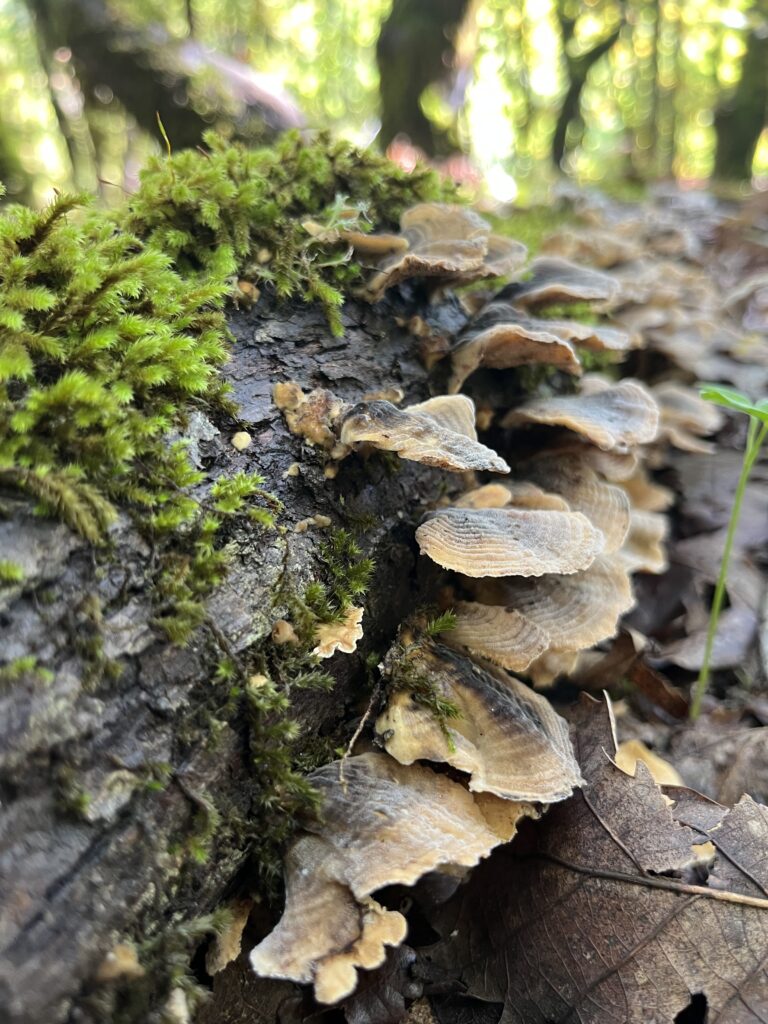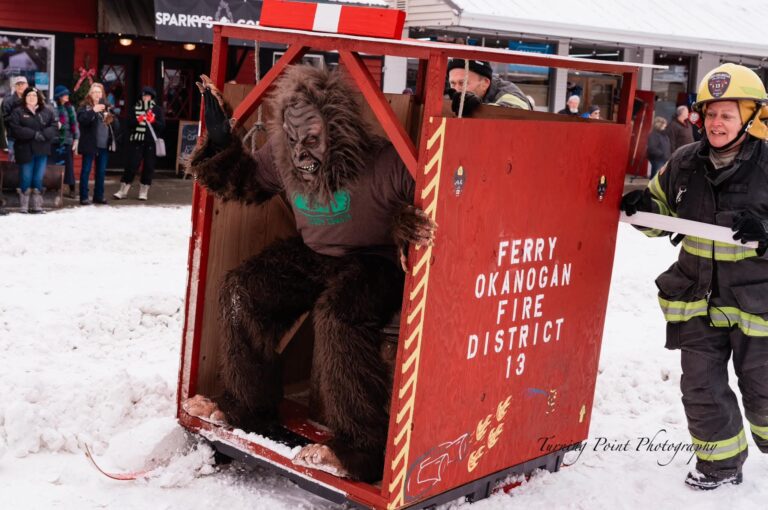The complex story of cattle grazing on public lands
In the Sept/Oct printer version of this article, a photo was mislabeled as Bryan Gotham. We apologize to the Gothams and out there readers for this inaccuracy. The photo has been omitted from the digital version.
On the top of a ridge near the town of Republic in northeast Washington, I sat 15 feet away from a herd of wild horses. Foals nursed off their mothers. In the distance, a small group of cattle lowed, and I watched as rancher Bryan Gotham expertly navigated his horse around them, moving them onto the lower steppes of his private land in Republic, Washington. Soon, the cows would be moved to the Colville National Forest to graze on a public land allotment for the summer.
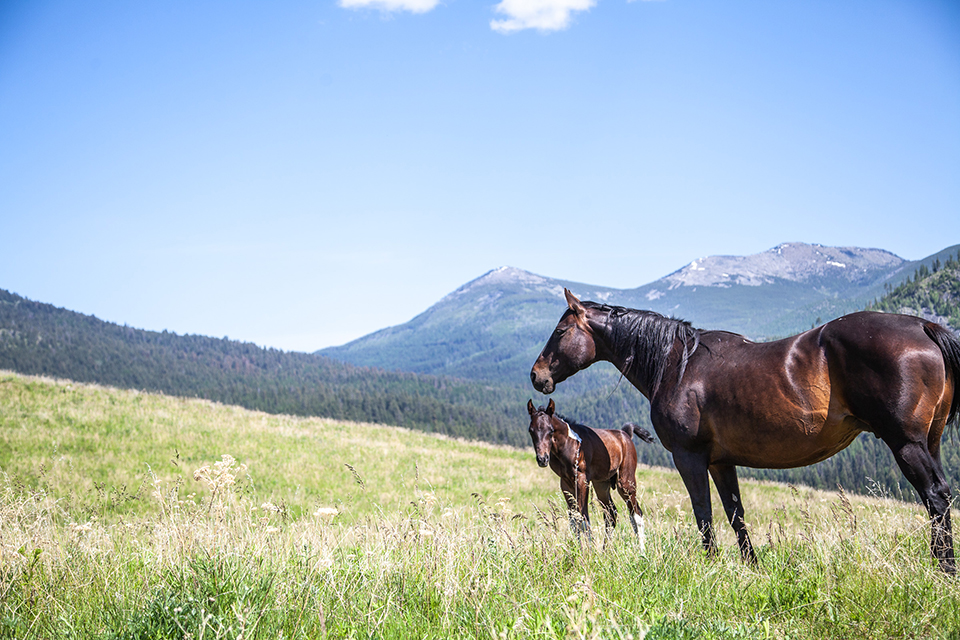
I was there to participate with the Gothams on their semi-annual cattle drive, called the round up. The Gothams have been raising cows since 1982 on both private and public land, and they’ve focused on animal and land health from the start. But public land grazing can be a contentious topic. Ungulates (hooved animals) have the power to contaminate watersheds, spread noxious weeds, destroy native vegetation, and disrupt the ecosystem. Ecological and environmental groups file lawsuits against the use of public grazing allotments while others lobby against it in government.
When we start to untangle this topic, though, there’s an unexpected pro of public land cattle grazing, at least in some places. When small ranch owners can stay in business, their deeded family homesteads, like the Gotham’s 2,200 acres in Republic, can remain wild and undivided for the benefit of wildlife.
“We need the lands connected to have a working ecosystem,” says Jay Shepherd with Conservation Northwest, an environmental organization that works to conserve local wildlife and wildlands. Habitat connectivity (a connected network of habitats that allows animals to move freely between spaces) is a cornerstone of Conservation Northwest’s mission. When private, undeveloped lands are kept intact, animals like deer, elk, grizzly bears, lynx, wolves and dozens of species of migratory birds and other wildlife are able to continue using and moving between habitat paths and corridors.
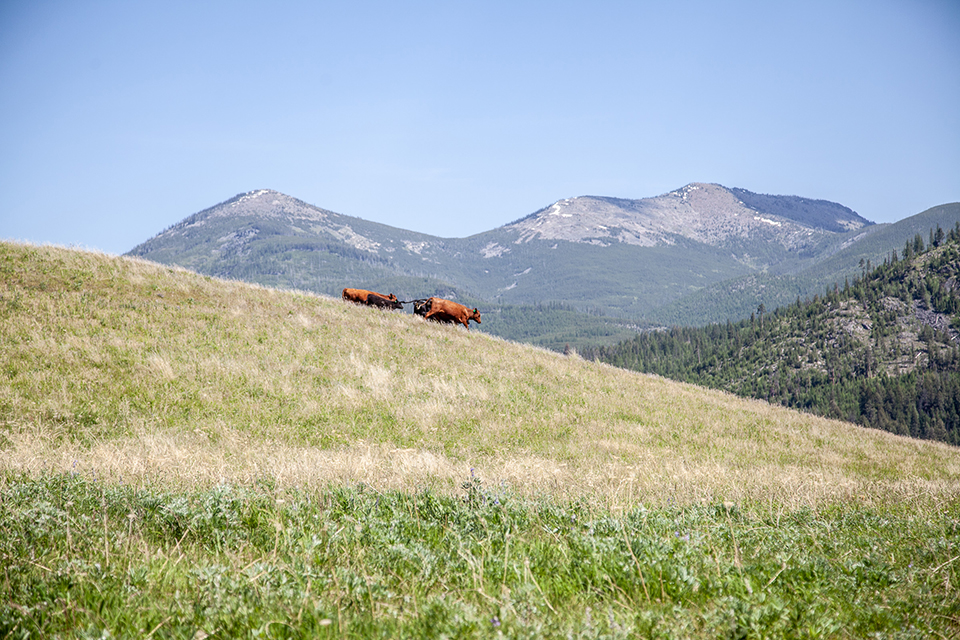
As the American West was homesteaded, rangelands were often overgrazed and mismanaged. In response to this, President Roosevelt signed the Taylor Grazing Act of 1934 to help regulate public grazing, maintain and improve soil quality, stabilize the livestock industry, and improve rangeland conditions. Currently, the U.S. Forest Service, Bureau of Land Management, and other offices oversee and manage grazing on public lands. When properly managed, public lands ranching can be done responsibly and provide the rancher the opportunity to stay in business. The Gothams are one of the single largest landowners in Ferry County, but it didn’t always use to be that way. Over the years, the Gothams have watched their friends sell off their parcels 20 to one 100 acres at a time.
For the last several decades, the Gothams have operated like this: permits are acquired from the U.S. Forest Service so that each spring cows, calves, and bulls can be moved from the Gotham’s private land in Colville to their private land in Republic, Washington. Then, before the end of June, the cows must be turned out to the designated public lands grazing allotment on the Colville National Forest where they will spend the summer grazing. (This is what the round up achieves.)

By the time I arrived for the round up, the Gothams were several days into the routine. Each morning, they saddled up horses, drank several cups of coffee as they discussed where to search for cows, then split into groups before riding for several hours. The terrain in this region is rugged. The riders urge their horses through thick brush and up steep, rocky scabs, searching for small groups of cows to move back toward the lower steppes. It’s a task that takes a lot of time in the saddle, and a lot of time is spent getting to know the contours of the land.
Everyone reconvenes at base camp (the family homestead) for lunch, discussing herd numbers while removing sweaty blankets from horses. After lunch, fresh horses are saddled and the whole process begins again. By the weekend, a majority of their 328 head of cattle will be ready to move the eighteen miles to the adjacent property, where they will spend the summer grazing on their public land allotment. Of the 1.5 million acres of the Colville National Forest, the Gotham’s cows will graze on 80,000 acres of it, one of the largest single unit allotments on the forest.

If you’ve spent any time in the Colville National Forest, it’s likely you’ve seen evidence of cows moving through the land. Brandon Weinmann is the Range Program Manager with the Colville National Forest and knows firsthand the importance of sustainable land management. In 2016, he partnered with several other agencies (as well as permit-holders like the Gothams) to reconstruct several spring water development sites on Forest Service land in Northeast Washington.
Gravity springs are protected with fence and set up so small portions of water are channeled via pipes into a trough farther downstream. These sites, placed in the upland parts of the forest, help redistribute cattle and keep them away from lower-elevation spring sites and riparian areas. Weinmann reiterates that it’s important to remember that a water development site will look as though many animals have passed through it, because they have. But that doesn’t inherently mean the land is damaged.
“Grazing does cause impact, but it’s also sustainable,” Weinmann says, noting that they frequently work with specialists to evaluate land health by checking vegetative growth near spring sites. The agency is mindful of these impacts and works alongside NEPA (National Environmental Policy Act) to continually analyze the effects of grazing on public lands.
“Working ranches help maintain open space from being developed,” Weinmann says. “Grazing on public lands helps maintain these large open spaces that everyone from the public can go and enjoy.”
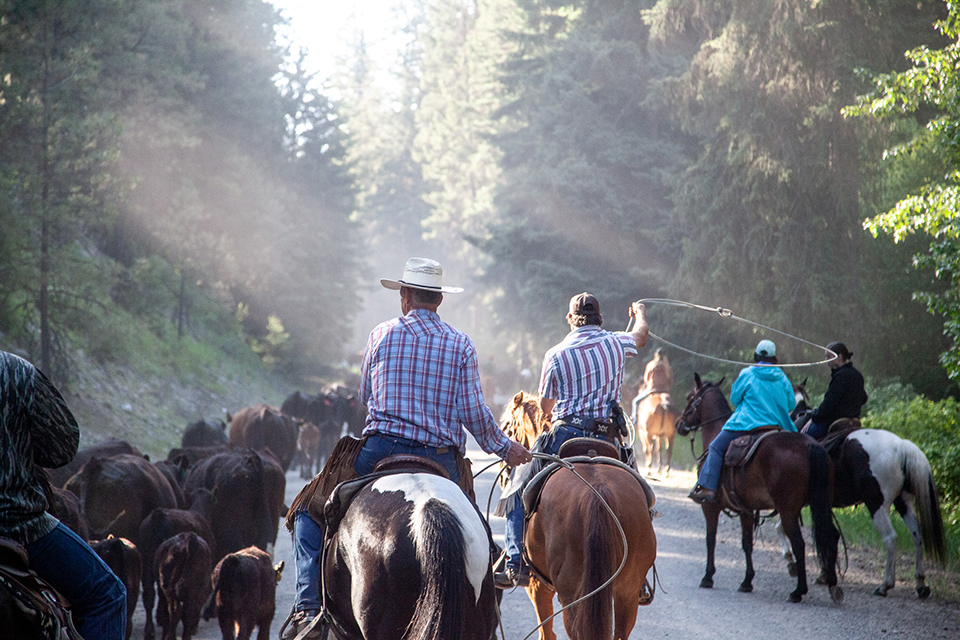
The Gotham’s cows winter over at their home in Colville, but cannot be turned out to their private land in Republic until late spring. That far north, the landscape doesn’t become viable for cattle (due to grass growth and the possibility of soil compaction) until the first week in May. Gotham says the cows (and horses they raise) will eat an average of 1,300 tons of hay during the winter. They are able to grow about 900 tons on their 230 acres in Colville and must supplement the rest. If their cows couldn’t graze on public allotments, the cost of supplemental food would put them out of business within months.
“In the current economy, you couldn’t afford to come out of college and start a farm,” says Gotham, adding that it’s nearly impossible to purchase land without considerable capital. As more family farms fall to developers, the landscape becomes uninhabitable to much of the natural world.
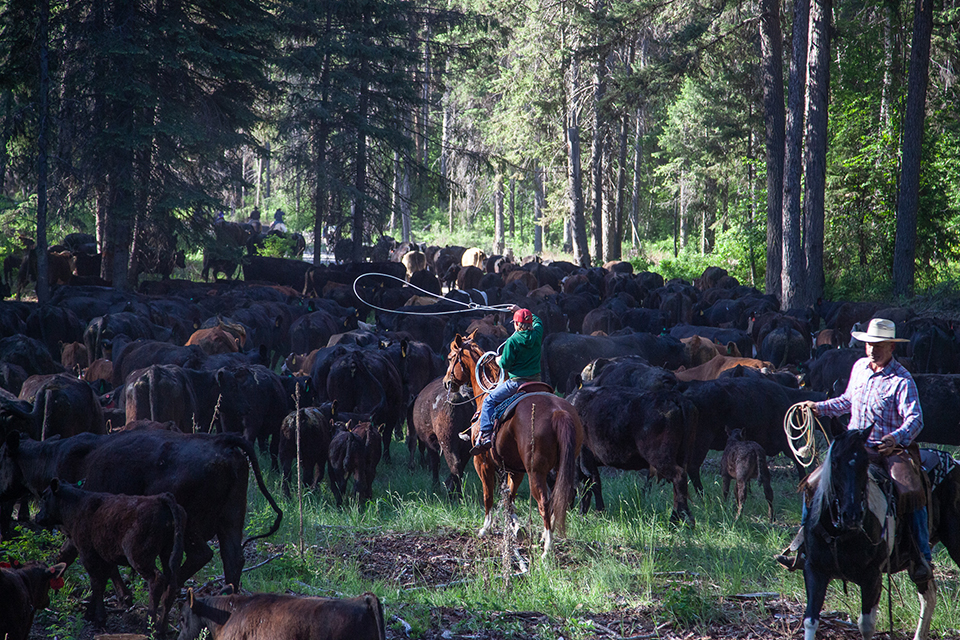
“When we start fragmenting the landscape,” Shepherd says, “we’re affecting an animal’s ability to move from point A to point B.” Dozens of animal species then become incapable of continuing normal migration patterns.
Public land grazing is perhaps an imperfect solution, as cows aren’t a native species and have caused damage to riparian areas and springs when mis-managed, but ethically-raised animals in an American foodscape that remains obsessed with beef could be a healthier way forward that works with our public lands, not against them.
While the conversation remains muddled, Shepherd says, “There’s a lot of common ground, you just have to look for it.” For the Gothams, it’s about creating a family legacy of good animal husbandry while practicing good land stewardship—a goal they share with Conservation Northwest and all who recreate on public lands.

As my time at the round up came to an end, I was left with an impression of camaraderie. During the quiet moments, everyone swapped stories about past round ups, comedic mishaps and equine behavior. I was the outsider who was asking sticky questions.
“Do you consider yourself an environmentalist?” I asked Gotham as we sat around a campfire in between rides. Gotham leaned forward, his arms covered in bruises and cuts from herding cattle out of thick brush. His shirt was ripped from an incident with a horse earlier that day.
“I think cattle ranchers and farmers were some of the first environmentalists before the term was even created,” he says. It’s about working toward a common goal of keeping small family ranches intact and the wild land, wild. //
Bri Loveall is the Digital Editor for Out There Outdoors. When she isn’t tending to her family, you can find her in the garden, begging her plants to grow.











